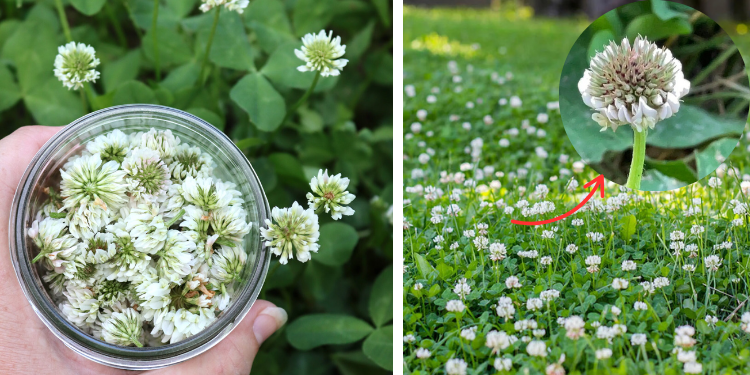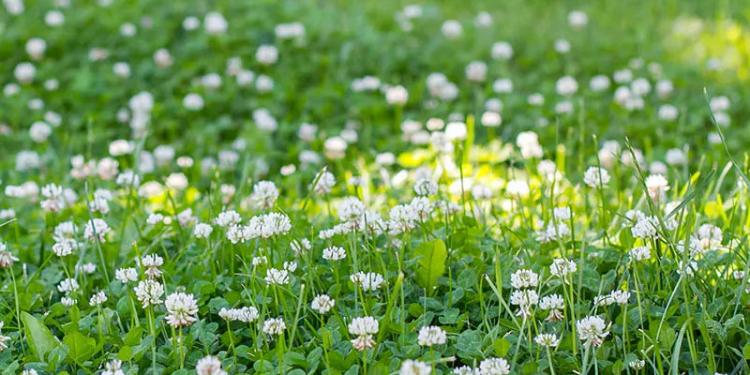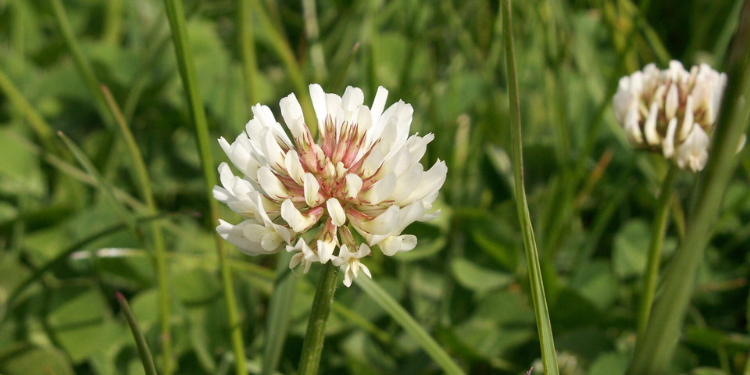
From Lawn to Remedy: All You Need to Know About White Clover (Trifolium repens)
by Linda Parker

White clover (Trifolium repens), a common yet often overlooked plant, is one of nature’s most valuable gifts hiding in plain sight.
Found growing in lawns, meadows, pastures, and even sidewalk cracks, this unassuming wild herb is a nutrient-rich plant with medicinal, culinary, and environmental benefits.
From ancient herbal medicine to modern permaculture gardens, white clover is cherished for its edible leaves and flowers, soil-enhancing properties, and ability to attract pollinators.
In this comprehensive guide, you’ll learn everything you need to know about white clover – including its uses in homemade remedies, foraging tips, safety precautions, and why it’s a plant worth keeping around.

What Is White Clover (Trifolium repens)?
White clover is a perennial, low-growing plant in the legume family (Fabaceae). Native to Europe and Central Asia, it has naturalized across the globe and is now one of the most common wild plants in North America.
Identifying features:
- Leaves: Trifoliate (three-part) leaves with oval leaflets, often marked with a faint white crescent or “V” pattern.
- Flowers: Small, round, white flower heads made up of tiny individual florets. Sometimes tinged with pink.
- Growth habit: Spreads along the ground through creeping stems (stolons) and forms dense mats.
- Height: Typically 4 -10 inches tall.
- Bloom season: Late spring to early fall.
White clover is often confused with red clover (Trifolium pratense), but red clover grows taller and has pink-purple flowers.
Nutritional and Medicinal Properties of White Clover
White clover is edible and medicinal. It contains beneficial compounds that have been used for centuries in folk medicine and natural healing practices.
Nutritional profile:
- Rich in vitamin C, vitamin A, and trace minerals.
- Contains flavonoids, coumarins, and isoflavones.
- High in protein, especially in young leaves.
- Mildly alkaline, making it beneficial for balancing pH levels.
Medicinal actions:
- Detoxifying (supports lymphatic and liver function);
- Anti-inflammatory;
- Expectorant (helps clear mucus from lungs);
- Diuretic;
- Mildly sedative (relaxing properties).

10 Proven Benefits of White Clover
How to make it:
- 1 tablespoon of dried flowers (or 2 tbsp fresh)
- 1 cup of hot water
- Steep for 10–15 minutes
- Optional: Add lemon, honey, or mint
Drink up to 2 cups daily for wellness support.
2. White Clover Salve for Skin
Use white clover-infused oil as a healing salve for skin issues.
Ingredients:
- 1 cup dried white clover
- 1 cup carrier oil (olive, coconut, or almond)
- Beeswax (for thickening)
Steps:
- Infuse the clover in oil over low heat (double boiler) for 2–3 hours.
- Strain and mix with melted beeswax.
- Pour into tins and cool.
Apply to cuts, scrapes, bites, and dry skin.
3. Soothing Poultice
Crush fresh white clover leaves into a paste and apply directly to insect bites, minor wounds, or skin irritation.
4. White Clover Tincture
Used for more concentrated medicinal applications, especially for coughs and immune support.
How to make it:
- Fill a glass jar with fresh clover flowers
- Cover with 80-proof alcohol (vodka or brandy)
- Let sit for 4–6 weeks in a dark place
- Shake occasionally, strain, and store in dropper bottles
Use 10–20 drops diluted in water as needed.
5. Infused Honey
Add dried clover flowers to raw honey for a subtly sweet herbal infusion. Let sit for 1–2 weeks, then strain. Great for tea or sore throat relief.
How to Find and Forage White Clover
White clover is easy to identify and forage, but responsible harvesting is key.

Where It Grows:
- Yards and lawns
- Open fields and pastures
- Along trails and roadsides
- Edges of forests
- Sunny, grassy areas with moderate moisture
When to Harvest:
- Leaves: Spring through fall (best when young and tender)
- Flowers: Late spring to early fall, when fully bloomed but not browned
Foraging Tips:
- Harvest from areas free of pesticides, fertilizers, and pet traffic.
- Pick only the top parts – leaves and flowers.
- Avoid clover from roadsides due to pollution.
- Never over-harvest from one patch.
- Rinse thoroughly before use.
Precautions and Side Effects
While white clover is generally safe, there are a few precautions to consider:
1. Allergic Reactions
Some individuals may have a mild allergic reaction, especially if allergic to other legumes or flowering plants.
2. Blood Thinning Effects
White clover contains coumarins, which may thin the blood. Avoid use if you’re on blood-thinning medications (like warfarin) or have bleeding disorders.
3. Hormonal Activity
Contains plant estrogens (isoflavones). Avoid or limit use during pregnancy, breastfeeding, or if you have estrogen-sensitive conditions.
4. Mold Risks in Spoiled Clover
Never use fermented or spoiled white clover, as it may contain harmful compounds (like dicoumarol) that can interfere with blood clotting.
5. Always Consult Your Doctor
If you’re taking medications, managing a chronic condition, or pregnant/nursing, consult a qualified healthcare professional before using white clover medicinally.
White Clover vs. Red Clover: What’s the Difference?
| Feature | White Clover (Trifolium repens) | Red Clover (Trifolium pratense) |
|---|---|---|
| Flower color | White or white-pink | Purple-pink |
| Growth habit | Low and creeping | Upright, bushy |
| Leaf pattern | Often has white crescent markings | Similar trifoliate leaves |
| Medicinal use | Mild and gentle | Stronger, with phytoestrogen effects |
| Culinary use | More commonly eaten raw | Often used in teas and infusions |
Both are edible and medicinal, but white clover is milder and more commonly used in daily foraging or casual home remedies.
White clover may be a common lawn weed to some, but for foragers, herbalists, and natural gardeners, it’s a valuable plant with healing, nutritional, and environmental benefits.
Whether you use it as a ground cover, brew it into a tea, or make it into a healing salve, white clover deserves a place in your wellness and gardening toolkit.
It’s free, abundant, easy to identify, and surprisingly versatile—nature’s quiet multitasker that’s always within reach.





